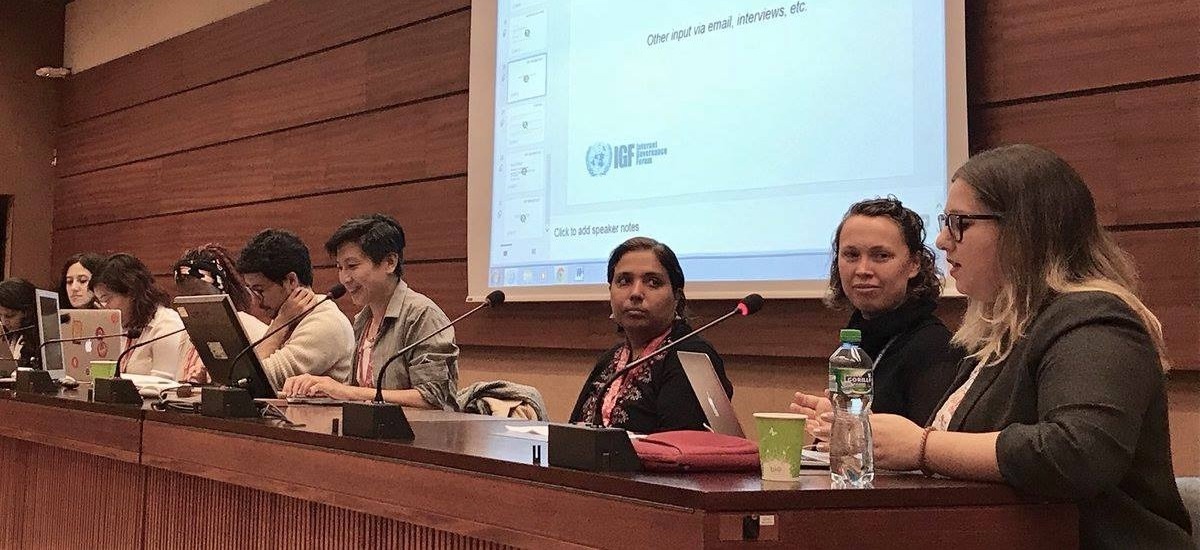A Need for More Gender-Disaggregated Data
While Internet access and use is rapidly growing all over the world, women still face several challenges that hinder them from benefiting meaningfully from it. The proportion of women able to access and use the Internet is 12% lower than the proportion of men accessing and using it worldwide. This gap is even bigger in developing countries where only one out of seven women use the Internet.
These numbers highlight some of the discrepancies that the digital gender gap is both producing and reproducing. However, understanding them and to what extent they affect women’s online lives requires more data. While many studies have been conducted in the last few years in order to gather evidence about the existing barriers, there are still many aspects of the phenomenon that need to be studied in-depth, particularly at grassroots levels.
Various recent efforts – including those of the W20, the UN Broadband Commission on Sustainable Development, the Alliance for Affordable Internet (A4AI), the World Wide Web Foundation, the GSMA and Association for Progressive Communications – have expressed concerns about the paucity of gender-disaggregated data and insights on Internet access and use masks the true extent of the digital gender divide.
Without this data, closing the digital gender gap will be difficult as we simply don’t understand it.
This article explores how the Best Practice Forum on Gender and Access (BPF Gender) as part of the Internet Governance Forum (IGF) intersessional work, has, over the past three years, collected qualitative and anecdotal data to help better understand these gender discrepancies by considering different aspects of women’s Internet access and by encouraging stakeholders to contribute to the process.
The BPF Gender: Exploring Gender Barriers
While acknowledging the role that women’s social locations (such as gender, class, religion, caste, race, sexuality, ability, etc.) play in mediating access, many women in the Global South still face hurdles to adopt or use the Internet meaningfully or at all.
In its 2017 report, the BPF Gender continued exploring these issues and, apart from a lack of digital skills and capacity development, indicated the significance of barriers like affordability and infrastructure challenges, a lack of relevant and local language content, social stigma, and cultural barriers. Regarding the extent of the barriers, the research also concluded that such barriers are experienced differently across various communities. Women from LGBTQIA+ communities, for example, tend to be subjected to cultural stereotypes and stigmas quite acutely, while women refugees often highlight barriers related to the cost of devices and data.
Better collaboration between stakeholders in mapping initiatives, further gender-specific research in the area of community access networks, and the need for differentiating between public and private means of access were some of the recommendations issued by the BPF in both the 2016 and the 2017 reports.
As the BPF aims to continue conducting research in these areas and building upon these outcomes, in 2018 the BPF Gender is focusing on identifying initiatives working on complementary models of connectivity to address specific communities of women and exploring their impact to such groups.
By doing so, the BPF Gender is contributing to understanding who the impacted women are and where they are in order to foster public policies and best practices in the Internet Governance environment that encourage women to connect themselves and empower them to make use of the Internet in their day-to-day lives.
A Community-Driven Process
The BPF Gender work started in 2015 as part of the IGF intersessional work, and, due to the importance that the topic has for the community, has continued its work since then
During these three years, the BPF Gender has functioned in a bottom-up, multistakeholder, and community-driven manner.
“The stories and anecdotes the BPF community has managed to collect from diverse stakeholders around the world have provided us with interesting and useful insights into the challenges real women face in gaining meaningful Internet access”, said Anri van der Spuy, rapporteur of the BPF Gender in 2015 and 2016, and co-facilitator in 2017.
The work is done by volunteers from different regions who meet each other online on a regular basis to discuss different approaches, methodologies, and challenges. Enabling diverse stakeholders to collaborate to try to better understand and address women’s barriers to access to the Internet, has produced incredibly valuable evidence of the challenges that define the digital gender gap.
Three Ways of Contributing to the BPF Gender
Gathering the information needed to better understand women’s access and use of the Internet requires the efforts of all of us. From sharing your experience or highlighting initiatives that are making a difference in your community, there are several ways in which each of us can contribute to generating knowledge about the causes and remedies that affect women online.
The ways of contributing to the BPF Gender 2018 are:
1: Joining the BPF calls and mailing list
During the year, the BPF Gender has regular calls to organise the work and discuss different topics related to women’s Internet access and use. The calls are open to everyone and create an atmosphere and a culture where everyone has a voice and has something to contribute to the work. As any other Internet Governance-related process, we also use our mailing list for considerations and discussions of possible approaches and topics the BPF should be focusing on. If you are interested, sign up here.
2: Completing this year’s survey
To collect concrete inputs, the BPF Gender invites all different stakeholders and communities to contribute to this year’s survey. Recently, the BPF Gender has launched a survey to gather information about the impact that complementary ways of connectivity are having on access to the Internet for women. The survey is open until September 30, 2018, and will feed the BPF final report. We encourage you to complete the BPF survey – hosted on Google Forms and LimeSurvey – or to share it with your networks!
3: Promoting the BPF work in your country/region
At local and regional level, there are several spaces, like the NRIs, that have discussions about gender issues and that could be valuable platforms to expand the BPF work. If you are attending an event in your country and you want to share the BPF work with your community, please do! We can provide you support to prepare a presentation.
The BPF Gender 2018 wants to find means of empowering women and fight for them to thrive online so if you are conducting research in women’s Internet access or want to become more vocal in exposing the barriers encountered by women online, join us!
About the BPF Gender
In 2015, the United Nations Internet Governance Forum (IGF)’s best practice forum (BPF) on Gender and Access was launched to conduct intersessional research on gender issues. That year the BPF investigated online abuse and gender-based violence and proved the importance of continuing to study Internet access and use with a gender perspective. As a result, in 2016, the BPF considered women’s meaningful access to the Internet and in 2017, the group delved deeper into the experiences and needs pertaining to the Internet of specific communities of women. Every year, the BPF gender produces a report with the main outcomes (see the 2015, 2016 and 2017 reports) that have been used to inform discussions at various policymaking fora at the global, regional, and national level. The work of 2018 is undergoing and, building on the work done during the past year, it is studying the impact that complementary ways of connectivities are having on different populations of women.
Help build an Internet that’s for everyone! #CountMyVoice

